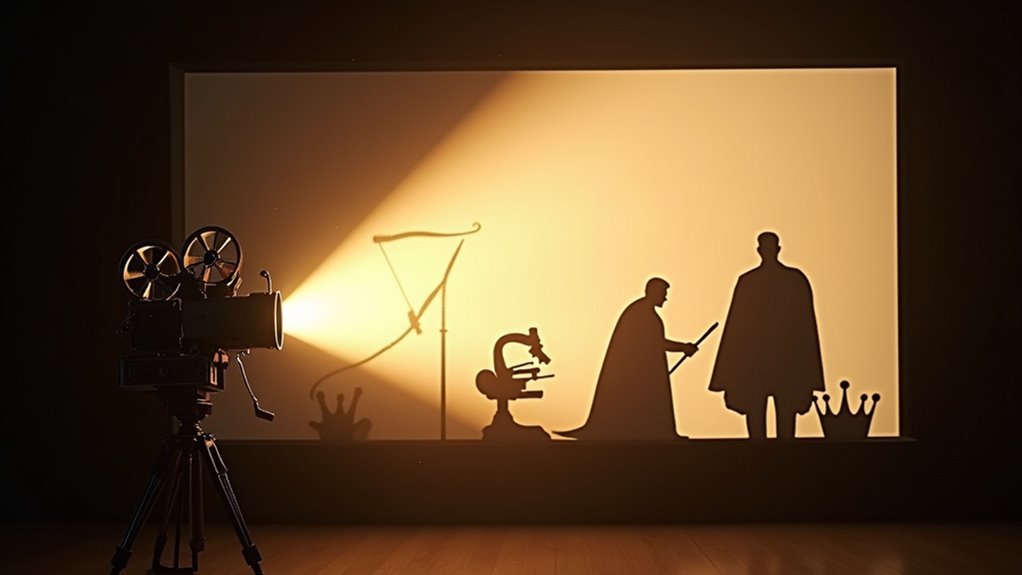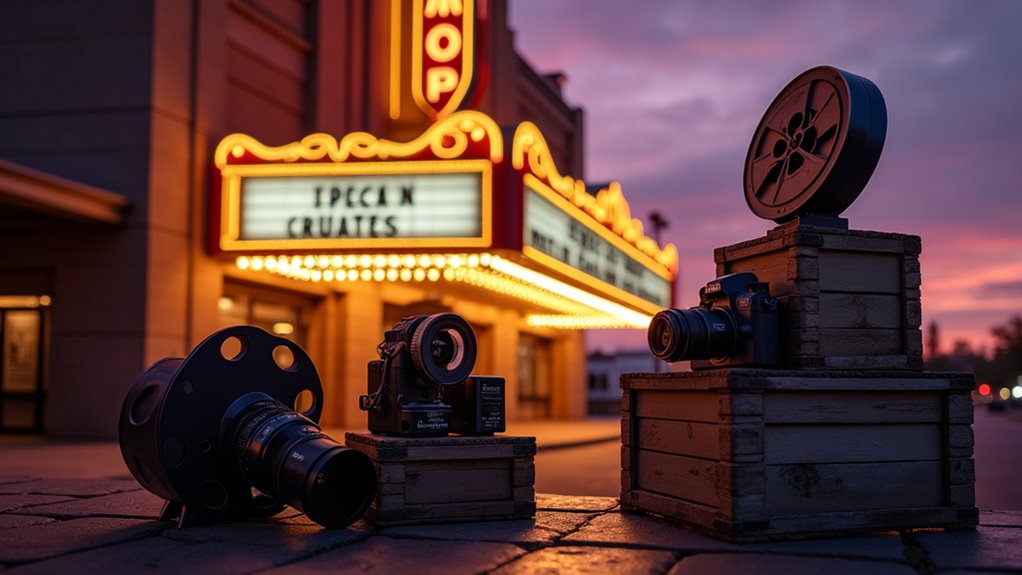Classic films like “His Girl Friday” and “Norma Rae” laid the groundwork for today’s empowering female narratives, with trailblazers from Mae West to Sigourney Weaver shattering stereotypes across genres. Modern standouts include “Hidden Figures,” celebrating brilliant NASA mathematicians, and “Barbie,” which cleverly subverts gender expectations. From Hollywood’s golden age to contemporary streaming hits, these stories showcase women’s strength through determination, wit, and resilience. The evolution of female representation continues to reshape cinema’s landscape.
Why Strong Female Leads Matter in Today’s Cinema

While Hollywood has historically relegated women to supporting roles and love interests, the rise of strong female leads in contemporary cinema represents a seismic shift in storytelling that continues to reshape audience expectations and cultural narratives.
This evolution reflects broader societal changes, with characters like Elle Woods demonstrating that strength comes in many forms, from intellectual prowess to emotional intelligence. With data showing that only 12% of protagonists were female in top films of 2014, the need for more representation remains critical.
The impact of these portrayals extends far beyond entertainment value, as diverse female leads serve as powerful role models who inspire young viewers to envision expanded possibilities for their own lives. Studies confirm that diverse representation helps reduce prejudice and build empathy among viewers.
Characters like Ripley from Alien and Furiosa from Mad Max: Fury Road have redefined what it means to be a hero, proving that compelling protagonists aren’t limited by gender.
Looking across genres, from action to drama to comedy, these complex female characters challenge outdated stereotypes while delivering nuanced performances that resonate with audiences of all backgrounds, creating a ripple effect that influences cultural perceptions worldwide.
Classic Films That Shaped Female Representation
The evolution of strong female representation in cinema can be traced back to several groundbreaking films from Hollywood’s golden age, where pioneering actresses shattered expectations long before modern discussions of gender equality.
Mae West’s bold portrayal of a confident lion tamer in “I’m No Angel” (1933) and Myrna Loy’s razor-sharp Nora Charles in “The Thin Man” (1934) set new standards for female characters who refused to play by society’s rules. Using her unashamed sexuality, West’s character Tira revolutionized how women could express themselves on screen.
The 1940s brought even more revolutionary roles, with Rosalind Russell’s quick-witted reporter in “His Girl Friday” becoming a blueprint for career-driven heroines. This tradition of breaking barriers continued with Norma Rae, whose story of a textile worker becoming a labor rights activist inspired generations of women to fight for workplace equality. The rise of the studio system during this period allowed for more diverse female roles as each major studio developed its own unique approach to storytelling.
Meanwhile, “Gone With the Wind” introduced audiences to Scarlett O’Hara, whose complex character demonstrated that female leads could be simultaneously flawed and compelling.
Films like “Stage Door” further expanded the conversation by exploring female friendship and professional ambition, proving that women’s stories could carry major productions while challenging traditional narratives about gender roles in society.
Modern Movies Breaking Gender Stereotypes

Streaming platforms have revolutionized storytelling possibilities, allowing for more nuanced character development and diverse narratives that challenge traditional gender roles.
Films like *Barbie* cleverly subvert expectations by critiquing the very stereotypes they appear to represent, while real-life stories such as *Hidden Figures* showcase women breaking barriers in male-dominated fields. The movie powerfully demonstrates how women face inequity in the real world while encouraging ambition and challenging traditional roles. The success of movies featuring strong female leads since Sigourney Weaver’s groundbreaking roles has proven audiences want complex heroines.
Behind the camera, directors like Ava DuVernay and Greta Gerwig are crafting authentic narratives that resonate with audiences tired of seeing female characters reduced to love interests or damsels in distress. The rise of digital filmmaking has dramatically lowered barriers to entry, enabling more female creators to tell their stories without major studio backing.
This proves that empowering stories sell tickets and change minds.
Frequently Asked Questions
How Do Strong Female Leads Impact Box Office Performance Globally?
Female-led films have demonstrated remarkable box office potential globally, with Barbie’s $1.4 billion haul in 2023 leading the charge.
Wonder Woman’s $822 million success and Gangubai Kathiawadi’s strong international performance prove that audiences actively seek diverse storytelling.
While comprising 30% of top films, female-led projects consistently deliver strong returns when backed by strategic marketing campaigns, especially as streaming platforms expand their reach and influence.
What Percentage of Films Feature Female Protagonists Compared to Male Leads?
Recent data shows that female and male protagonists each represent 42% of top-grossing films in 2024, marking a significant shift from 2023’s imbalanced figures where female leads dropped to 28%.
While theatrical releases maintain near-parity, streaming platforms demonstrate even stronger female representation, with 49% of original films featuring women protagonists compared to 38% with male leads, though ensemble casts account for the remaining percentage.
Which Streaming Platforms Offer the Most Movies With Strong Female Leads?
Netflix emerges as the leader in streaming strong female-led content, offering diverse titles from “Nomadland” to “Kill Bill.”
Max follows closely with recent additions like “Bottoms” and various genre offerings.
Hulu maintains a solid selection across multiple categories, while Paramount Plus rounds out the options with classics like “Rosemary’s Baby.”
The platforms consistently expand their catalogs, though Netflix’s commitment to original content gives it the competitive edge.
How Has Social Media Influenced the Demand for Female-Led Films?
Social media has dramatically amplified demand for female-led films through viral marketing campaigns and passionate online communities.
Platforms like Twitter and Instagram have created powerful feedback loops, where audience enthusiasm translates into box office success, while analytics help studios gauge market interest.
This digital word-of-mouth has proven especially effective for films like “Wonder Woman” and “Captain Marvel,” leading studios to greenlight more female-centered projects.
What Challenges Do Actresses Face When Portraying Traditionally Male Character Roles?
Actresses taking on traditionally male roles face scrutiny over their physical capabilities, with audiences questioning their believability in action sequences or leadership positions.
They must also navigate the delicate balance between maintaining feminine qualities while embodying traditionally masculine traits, often facing criticism for being either too aggressive or not assertive enough.
Additionally, these performers encounter industry resistance, limited role availability, and the pressure of representing gender equality while delivering compelling performances.
